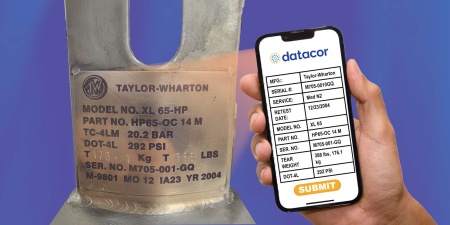We’re all living through unprecedented times. On a Zoom call with a large California distributor, I learned that, with four employees out with COVID, one owner was driving a route truck and the other was manning a branch store. Sound familiar? The pandemic has forced us all to be more flexible. The need for new safety protocols and innovative ways of dealing with everything from employee absenteeism to supply chain outages and customer closures, have left us struggling to maintain effective operations.
On top of the extraordinary pandemic events, the long-term outlook for traditional distributors continues to be under threat. In a February 23, 2021 NAW webinar, Jonathan Bien of the Distribution Strategy Group, advised that in a Next 5-Year by Channel Revenue Shift, the traditional distributors share of overall distributor revenues will fall from 66% to 52%, and direct manufacturers will increase their share from 12% to 19%.
Think Strategically
Given these conditions, I advise planning for the future by thinking strategically about growth, change, and innovation. Remember, any business that isn’t evolving is dying. This isn’t our first recessionary cycle. Use the lessons learned from the recessions of 2000 and 2008 to prepare for growth in 2021.
In the January and February GAWDA sponsored ITR webinars (gawda.org/itrwebinars) with Alex Chausovsky, economist and forecasting expert, he discussed how, in the second half of 2021, the nation will move out of the pandemic-driven recessionary trough and into a recovery and growth mode. Now is the time to define the steps you can take to ensure your business is part of that recovery. As a distributor, how have you responded to major business paradigm shifts that threatened your sales growth in the past? Think about what you were required to do to be in a position to be part of past booms.
Future Relevancy
There are several key disciplines that, when undertaken, will help ensure your future relevancy and business growth. Consider participating in these:
1. ERP system/process efficiencies
Customers are looking to minimize suppliers and are zeroing in on those that provide a broad range of brand name products. These large suppliers use sophisticated and expensive ERP systems to be efficient. As a small independent distributor, working through a collective distributor purchasing group or association can give you access to these systems and keep you relevant. Consider these announcements about process efficiency made at a recent webinar held by the Independent Welding Distributors Cooperative (IWDC), a group formed to leverage the strengths of independent welding distributor members across North America.
Frank Kasnick, IWDC President and CEO reported: “We delivered our initial product content goal of ~8,400 SKUs across more than two dozen vendors. We thank our numerous member companies that collaborated with our staff to build out our Product Information Management (PIM) structure and also thank those distributor members who helped in the pilot. IWDC’s PIM system is designed to supply member companies with enriched product content, via a subscription service, to support their evolving digital needs. Those digital needs include eCommerce, digital/print catalogs, member company websites, and ERP product structure.”
IWDC’s Director of Marketing said: “We were able to share next steps with members who are ready to plug in and receive product content and we had a robust Q&A session to cap off the webinar. We have a lot more to do in 2021, including rolling out phase one of our gas product content in Q1, and we are very excited to start onboarding our participating members.”
For those choosing their own ERP systems, Ken Thompson, a contributor to Intelligas Consulting, suggests, “The packaged gases and welding/industrial/safety distributors have selected SAP, JD Edwards, DataWeld, Profit 21/Epicor, Computers Unlimited, Infonetics, and NetSuite as reliable solutions. Through collaboration with the Evolution X’s eCommerce facing site, many of these companies may have access to e-business solutions not previously considered. The good news is that smaller companies may now have options that they thought at one time were beyond their respective means.”
2. eCommerce platform
As part of an effective customer partnership, an in-house eCommerce platform is essential. General Distributing of Great Falls, Montana, has customers who need to research products and require 24/7 delivery and access to online account management. To meet those needs, the company recently updated its eCommerce platform and reports: “Customer registration is now fast and easy, as is making a credit application, searching by product name, brand, and/or part number, and navigating by product category or brand. The new platform also provides detailed product information, including price and availability, and allows for requesting a quote and quick order. It is mobile-friendly and provides online account management.”
3. Strategic wholesale alliances
Along with PIM, a Customer Service Representative (CSR) portal and a B2B eCommerce site for distributors, linkages with wholesalers’ websites can help augment the broad product requirements the distributor’s clients now demand. Like distributors, wholesalers must continue to innovate to maintain their relevancy in the near future.
4. Trade association memberships
It is of paramount importance for the smaller independent distributor to join trade associations, like the IWDC mentioned above. These groups will improve your profitability not only by allowing you to offer a broader product offering, but by enabling you to do so at reduced collective pricing, with annual patronage dividends, and shared best practices. Collaboration with other distributors and membership programs are added bonuses.
5. Join forces with other independent distributors
Just as independent welding and gas distributors have experienced industry change through national and international corporate consolidations and acquisition, so have many of their customers. To be effective, the smaller distributor must join forces with other independent distributors to service customers in multiple geographic locations. For example, when I was with an independent distributor, we joined forces to create a national beverage CO2 network. This enabled us to service the national fast food and micro-brewers networks.
6. Value-added customer partnerships
Despite sales disruptors like Amazon, Grainger, Fastenal, etc., and the possibility of manufacturers going to direct sales, I believe the industrial gas and welding customer is still looking for local, strategic distributor partnerships. To be effective, these partnerships must include value-added services such as VMI (Vendor Managed Inventory), Kanban, consigned stocking, qualified service technicians, product enhancement recognition and training, etc. Adding services like these to the product will differentiate the distributor from the online alternate chain or a manufacturer with direct drop-shipping. While these value-added services add to your costs, customers generally are willing to pay a premium for them. Some distributors have found that value-added services can become exciting new revenue streams.
7. Sales and marketing
In today’s sales environment, well-trained salespeople are essential to success. While relationship building remains important, the days of deals being made at golf outings or over dinner are being steadily replaced by the rep with greater social media skills and technical product knowledge. When I published my third book, The Art of Sales, A Book of Sales Stories, the publisher, Vicara Books, told me that I needed to use social media to sell it. I contracted a Marketing Strategist and the impact on my business has been amazing. Connecting with prospective customers and building social media groups for each salesperson’s customers is the new way to sell.
Now is the time to invest in your salesforce. In a webinar by Distributor Strategy Group, February 17, 2021, Ed Gerber, CEO of ISA Partners, advised that the customer still values true partnership relationships more than any other single factor. The webinar Roundtable’s advice to the product manufacturer was, “It’s not about you, or the distributor, it’s about meeting the needs of the end-user. The customer wants qualified, well trained salespeople to introduce them to the right products and services to help drive down manufacturing costs. As the post-pandemic economy improves, it’s time to add professional talent to your salesforce and to invest in training your existing sales team.”
8. Specialized talent
With a great many partnerships based on the sharing of online platforms, the distributor of 2021 needs to keep IT staffing at levels that ensure the maximum benefit from the manufacturer/supplier’s ERP efforts and as well as from its own eCommerce site. In addition, today’s distributor needs more expertise in lean production methods, engineering for productivity enhancement, advanced economic/financial methods, and senior level strategists.
Overcoming the odds
Implementing many of the practices I outline above is out of reach for many small businesses from both a financial and personnel perspective. This is true for many independent gases and welding distributors. GAWDA statistics show that 50% of the welding and gas distributors have sales of less than $5 million, and another 22% have sales between $5 and $10 million. This means that 72% of the approximately 250 independent welding and gas distributors can’t afford the senior level expertise they need to invest in these key areas.
We can overcome those odds by banding together, which is something the GAWDA group does well. My goal is to help build a team of contract senior executives from within our industry to provide consultation to support this group of distributors. By drawing on the pool of retired or former owners and executives with deep industry knowledge, we can provide the type of expertise to help the next generation of regional distributors succeed.
We can’t let the changing technological and economic landscape disorient us. Confronting major business paradigm shifts requires that we all work together. With “Sales Change in the Air,” it’s time for the many of us who have had rewarding careers in the welding and gases distribution business to help ensure the next generation stays the course.








